Radioplane OQ-14/TDD
(including earlier variants)
During World War II, the Radioplane company built several thousand small radio-controlled model planes for use as aerial targets by the armed services. There were various models, which received designations in the USAAF's OQ-series and the U.S. Navy's TDD series, and these are discussed in this article.
RP-4
The history of Radioplane's targets began in 1935, when Reginald Denny built his RP-1, a radio-controlled wooden model plane with a span of 2.7 m (9 ft). This was followed by the RP-2 and -3 in 1938/39, and then the RP-4 in November 1939. The latter was demonstrated to the U.S. Army Air Corps, which then ordered 50 RP-4 aircraft for use as aerial targets for gunnery practice. This production order prompted the founding of the Radioplane Company. The RP-4 is referred to as OQ-1 by some sources, but this designation was never officially allocated by the U.S. Army. It is most likely an after-the-fact invention, because the #1 slot in the OQ-series had remained unassigned and the RP-4 is the immediate predecessor of the RP-5, which was designated OQ-2.
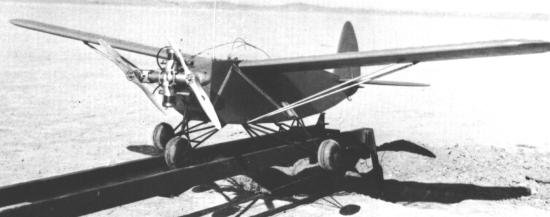 |
| Photo: Northrop |
| RP-4 |
OQ-2/TDD-1
Following the success of the RP-4, the prototype RP-5 was completed in June 1941, and tested by the USAAF as the A-2 powered aerial target. In that same month, the designation A-2 was changed to OQ-2 when the A-for-Aerial Target category was abandoned because of possible confusion with the A-for-Attack designator. The RP-5A production model, initially designated A-2A but changed to OQ-2A before completion, was first flown in early 1942.
The OQ-2A was a small plane with fabric-covered fuselage and wings, the latter having a wooden structure. The Righter O-15-1 two-cylinder piston engine drove two counter-rotating propellers. The OQ-2A was launched by a catapult and could be retrieved by parachute. For remote control, the operator, who tracked the drone visually, used an RC-56A radio transmitter to transmit a signal to the drone's RC-57A receiver. On loss of signal the OQ-2A's parachute would be automatically deployed.
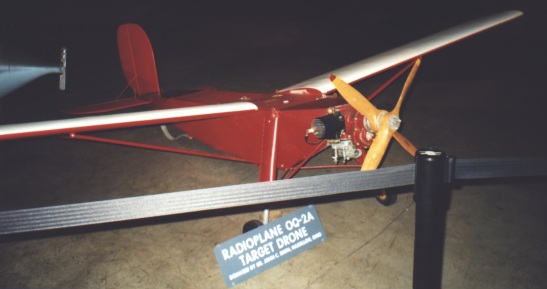 |
| Photo: Author |
| OQ-2A |
The OQ-2B was identical to the OQ-2A, except that the wing ribs had holes for a slightly lighter structure. The Navy's TDD-1 was an OQ-2 without the landing gear.
The OQ-2/TDD-1 was mass produced in 1943/44 by Radioplane and Frankfort, and a total of 3865 targets were built. Some sources quote a total of only about 980 for the USAAF, so apparently the bulk of the production were TDD-1s.
OQ-3/TDD-2
The OQ-3, first flown in December 1943, was an improved derivative of the OQ-2. It had a sturdier steel-tube construction in the fuselage, an uprated O-15-3 engine driving a single propeller, no landing gear, and modified equipment. The OQ-3 could achieve a speed of 165 km/h (102 mph). The U.S. Navy variant was designated TDD-2, and Radioplane and Frankfort eventually built a total of about 9400 examples of this drone.
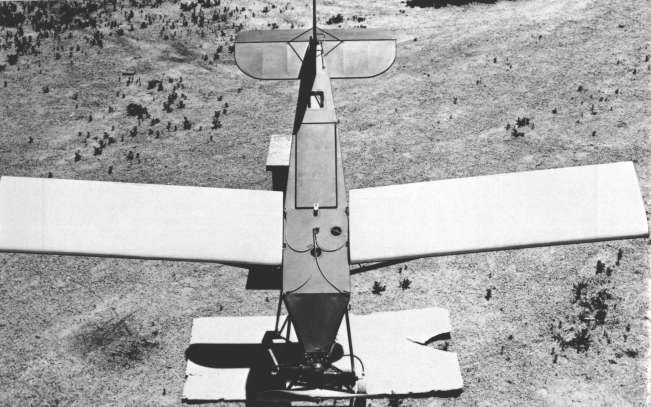 |
| Photo: Northrop |
| OQ-3 |
OQ-7
In November 1943, Radioplane completed the OQ-7, a derivative of the OQ-3 for increased performance. It had a new mid-mounted and slightly swept-back wing, but was otherwise identical to the OQ-3. The top speed increased to 180 km/h (112 mph), but the OQ-7 was not produced, presumably because of the more extensively improved and higher-performing OQ-14.
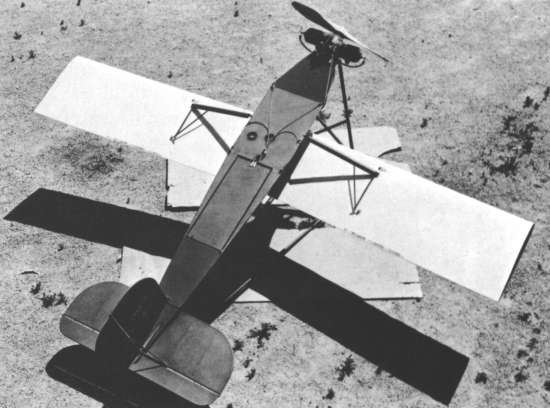 |
| Photo: Northrop |
| OQ-7 |
OQ-13
The OQ-13 is described by source [3] as an OQ-3 modified for use over water, presumably using a flotation gear. No further details are available, but it can be assumed that this model was not built in quantity.
OQ-14/TDD-3/TDD-4
Radioplane's model RP-8A was a significantly improved OQ-3/TDD-2 and was first flown in July 1944. It was of heavier construction and had a more powerful O-45-1 engine, rated at 16 kW (22 hp). Compared to the OQ-3, the RP-8A also had a longer fuselage, a shorter wingspan, and wings set flush with the fuselage. The improvements increased the top speed to 225 km/h (140 mph). The RP-8 was designated OQ-14 by the Army Air Force and TDD-3 by the Navy. A total of about 5200 RP-8A drones were built by Radioplane and Frankfort. The designation TDD-4 referred to a TDD-3 variant with a more powerful O-45-35 engine.
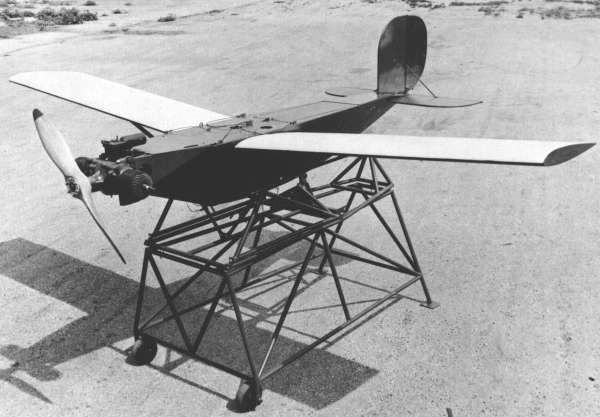 |
| Photo: Northrop |
| OQ-14 |
Note: A number of OQ-3 and OQ-14 targets remained in USAF service after 1948. Some sources say that they were redesignated as Q-3 and Q-14 at that time, but this is not true. Although no new OQ-series designations were allocated after 1948, existing OQ drones were not redesignated.
Specifications
Note: Data given by several sources show slight variations. Figures given below may therefore be inaccurate!
Data for OQ-2A/TDD-1, OQ-3/TDD-2, OQ-14/TDD-3 (except where noted):
| OQ-2A/TDD-1 | OQ-3/TDD-2 | OQ-14/TDD-3 | |
|---|---|---|---|
| Length | 2.65 m (8 ft 8.3 in) | 2.77 m (9 ft 1 in) | 2.82 m (9 ft 3 in) |
| Wingspan | 3.72 m (12 ft 2.7 in) | 3.71 m (12 ft 2.25 in) | 3.49 m (11 ft 5.5 in) |
| Height | 0.82 m (2 ft 8.2 in) | 87 cm (2 ft 10.25 in) | ? |
| Weight | 49 kg (108 lb) | 44 kg (97 lb) | 61 kg (134 lb) |
| Speed | 137 km/h (85 mph) | 165 km/h (102 mph) | 225 km/h (140 mph) |
| Endurance | 60 min | ||
| Propulsion | Righter O-15-1 piston engine; 4.8 kW (6.5 hp) | Righter O-15-3 piston engine; 5.9 kW (8 hp) | Righter/Kiekhaefer O-45-1 piston engine; 16 kW (22 hp) TDD-4: Kiekhaefer O-45-35 piston engine; 26 kW (35 hp) |
Main Sources
[1] Richard A. Botzum: "50 Years of Target Drone Aircraft", Northrop, 1985
[2] John M. Andrade: "U.S. Military Aircraft Designations and Serials, 1909 to 1979", Midland Counties, 1979
[3] US Army Air Forces: "Army Aircraft Model Designations", 1946
[4] US Navy: "Model Designations of Naval Aircraft", 1947 and 1950
Back to Directory of U.S. Military Rockets and Missiles, Appendix 1
Last Updated: 20 March 2003